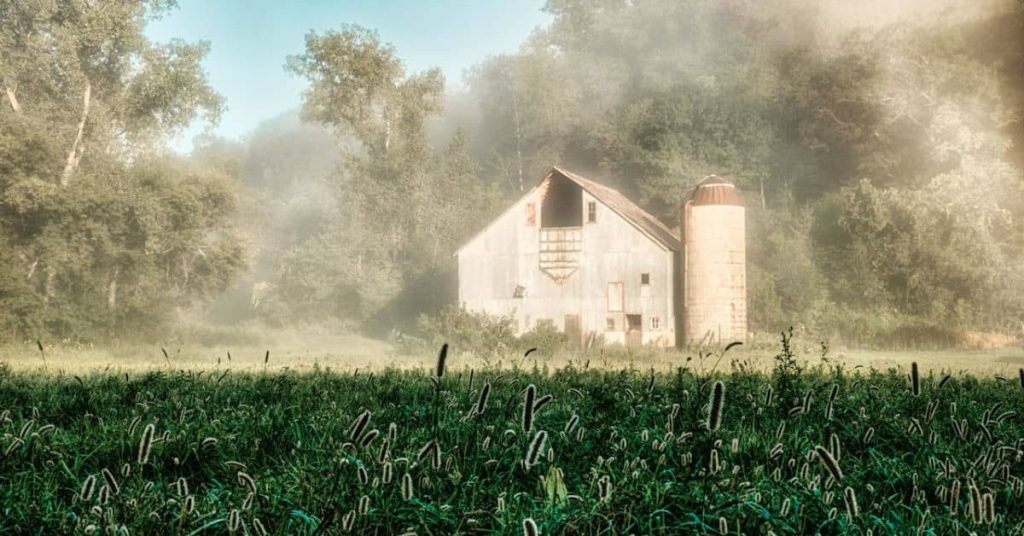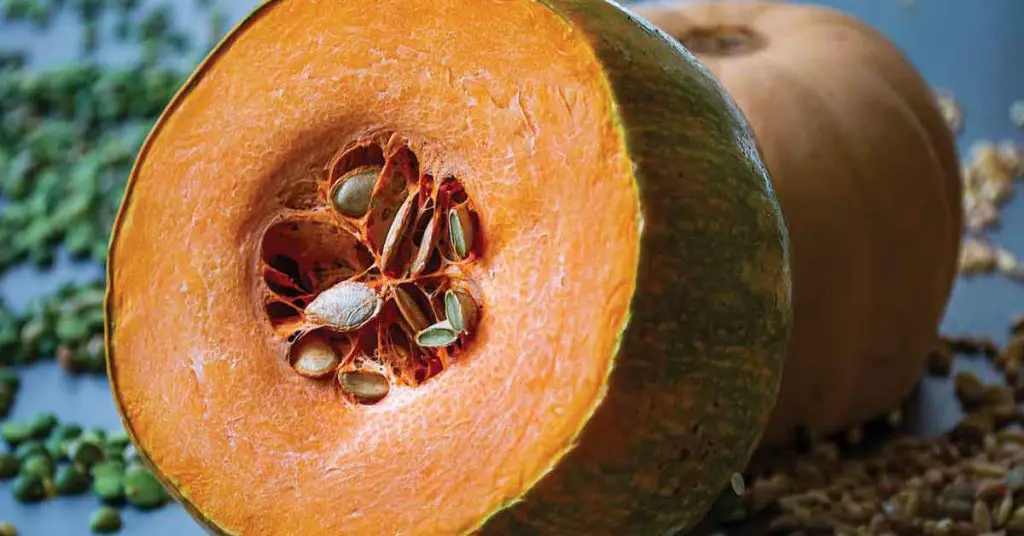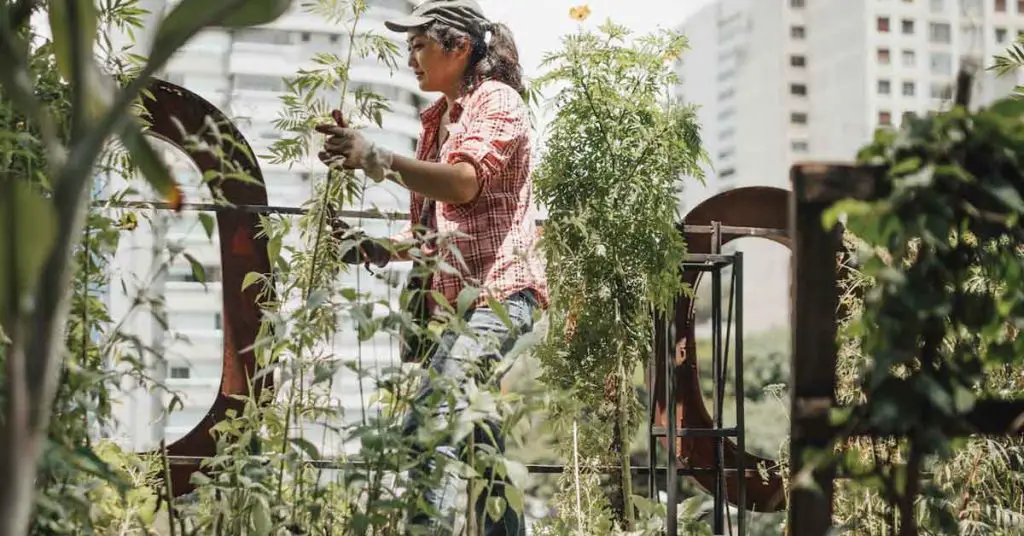Why Early Fall Feels Like the Real Start of Homestead Season
The first time I felt that crisp, cool air sweep across the pasture this year, I stopped in my tracks. The dogs were sniffing the breeze, the chickens were quieter than usual, and I just stood there, breathing it in. That little shift in the air always tells me the same thing: it’s time to switch gears.
Homesteading in early fall doesn’t always get the spotlight, but honestly, it’s one of the most important and manageable times of year on the land. Summer’s chaos is fading, winter isn’t knocking quite yet, and there’s a rhythm to the days that feels steady and grounded. It’s when planning and doing actually get to meet in the middle.
I’ve heard from a lot of folks lately—especially younger families and folks in their 30s—asking why homesteading has pulled them in so deeply. Maybe it’s the need for a slower pace. Or maybe it’s the feeling of doing something that just makes sense. Early fall gives you a chance to lean into all that without feeling rushed.
In this post, I’m sharing 11 things that have made homesteading in early fall a whole lot easier for me and plenty of others. Whether you’ve got five acres or just a backyard garden, these tips can help you get clear on what matters most this season. No perfection needed. Just a little guidance and some honest experience.
1. Fall Planting: What’s Still Worth Putting in the Ground

Homesteading in early fall is one of those times when it’s easy to forget you still have options in the garden. Summer might be fading, but your soil’s still warm, the weeds have slowed down, and there’s a quiet window to get a few things growing before winter fully sets in.
Whether you’re working a full acre or just tucking a few things into raised beds, there’s a real opportunity here. Some crops thrive with cooler nights. And others, like garlic or cover crops, are all about prepping for the next season, not this one. Fall planting can stretch your harvest, cut down on spring scrambling, and give you one last little push of momentum before the cold.
I used to skip this part. By September I was burned out and ready to shut the gate. But once I saw how much easier spring felt after even a bit of fall effort, it totally changed my approach.
Let’s break it down into two main questions folks usually ask: what can I plant right now, and what should I focus on based on where I live?
What to plant in early fall on the homestead
In most parts of the U.S., you’ve still got time for fast-growing greens and roots. Even if your first frost is just a few weeks out, you’d be surprised what can still come up strong.
Here’s a list I’ve had good luck with or heard success stories about:
- Lettuce and arugula (tuck it in every few days for a steady supply)
- Spinach, especially savoy types
- Radishes, they’re quick and satisfying
- Turnips and beets if your frost date is 4–6 weeks away
- Green onions and short-day onion sets
- Garlic (plant now, harvest in early summer)
I had a neighbor in Arkansas tell me he always plants his garlic on Halloween. He calls it his “trick-or-treat crop.” Gives it enough time to root before the hard freezes and comes up strong in spring.
And if you’re in the South or warmer coastal areas? You might even sneak in a late round of green beans or squash, depending on your microclimate.
Fall planting guide for Zones 6–9
Your zone plays a big part in what’s realistic this time of year. Here’s a zone-by-zone cheat sheet based on what’s worked for folks in the community:
- Zone 6 (Kentucky, parts of New York, Missouri): Focus on cold-hardy greens, root veggies, and garlic. Cover crops like winter rye and oats work well.
- Zone 7 (Tennessee, Virginia, inland Carolinas): You’ve got a little more wiggle room; leafy greens, bush beans, and even some carrots can still go in. Garlic should go in by late October.
- Zone 8–9 (Texas, Georgia, Northern Florida, parts of California): Fall is like a second spring. Beans, chard, collards, turnips, and fall squash can still work. And you’ve got more time to get your garlic and onions settled.
Whatever zone you’re in, it’s worth getting a few cover crops started. They feed your soil, hold moisture, and keep weeds at bay. I usually mix clover and rye and toss it over any bare ground I won’t be planting.
You can grab seeds from True Leaf Market or Southern Exposure Seed Exchange—both have great info on zone timing and soil type. These aren’t just places to buy stuff; their planting charts are genuinely helpful.
I’ll be honest, the first year I tried cover crops I let them dry out and forgot about them. But once I saw how soft the soil stayed through winter when I actually got it right, I made it part of the yearly routine.
Fall planting isn’t about doing more. It’s about doing the right things with the time you’ve got left and setting your spring self up for less stress.
2. Seasonal Chores That Save You Trouble Down the Line

When it comes to homesteading in early fall, the best advice I ever got was, “Do it now so you’re not freezing your hands off fixing it in January.” And it’s true. A little effort now can save you a whole lot of stress when the weather turns. The hard part isn’t the work—it’s deciding what needs to be done and what can wait.
I used to make the mistake of thinking fall was time to slow down completely. But when I started keeping a loose seasonal checklist, I realized early fall is actually a sweet window to button things up without rushing. The heat has passed, the ground’s still workable, and there’s just enough daylight to knock out one or two chores a day without burning out.
Early fall homestead chores checklist
Here’s a simple list of things I try to take care of between mid-September and early November. You don’t have to do them all at once. Just chip away when the weather’s good and the coffee’s strong.
Around the garden and barn:
- Clear out dead summer plants and compost what you can
- Pull drip lines and hoses, let them dry, then coil and store
- Clean and sharpen garden tools (this one’s easy to skip, but it makes a difference)
- Check fence lines for loose boards or sagging wire
- Drain and store gas-powered tools with stabilizer
- Repair or reseal raised beds
In the coop or livestock areas:
- Add extra bedding in coops and stalls
- Check feed bins for signs of moisture or mice
- Inspect water lines and heaters before it gets below freezing
- Patch up drafty spots with scraps of plywood or tarps
- Make sure gates and latches open and close smoothly
Around the house and pantry:
- Clean and rotate stored food (good time to donate extras)
- Prep your kitchen for canning if you haven’t already
- Bring in anything that might crack or rust in a hard frost
- Stock up on common meds or supplies before stores get picked over
I pulled some of these from my own routine, but also borrowed ideas from the Wandering Hoof Ranch fall homestead checklist. It’s full of practical reminders, especially for cooler climates.
Ask yourself:
- “What broke or froze on me last winter?”
- “What could I take care of now that I’ll thank myself for later?”
Fall goal setting chores
This is one I didn’t take seriously for years. Goal setting sounded too formal for the homestead life. But there’s a difference between writing out a five-year plan and just jotting down, “Next spring: build new brooder box” or “Try onions from seed.”
Every October, I sit down with my notes app or a scrap of paper and scribble out what worked, what flopped, and what I want to try next. It’s nothing fancy, but it helps me head into winter with a bit of clarity.
Some prompts that work for me:
- What crop gave me the most return for the least work?
- What part of the property needs attention next year?
- What gear or tools would actually make things easier?
- What was just too much? (It’s okay to cut stuff out.)
I wasn’t sure writing it all down would matter, but that first spring when I actually checked my notes instead of guessing? Big difference.
Fall is a natural pause point in homesteading. Not quite the end, but definitely a turning point. Doing just a few of these chores now can save you frozen fingers, broken gates, and a whole lot of spring scrambling.
3. Simple Winter Prep for Coops, Barns, and Sheds
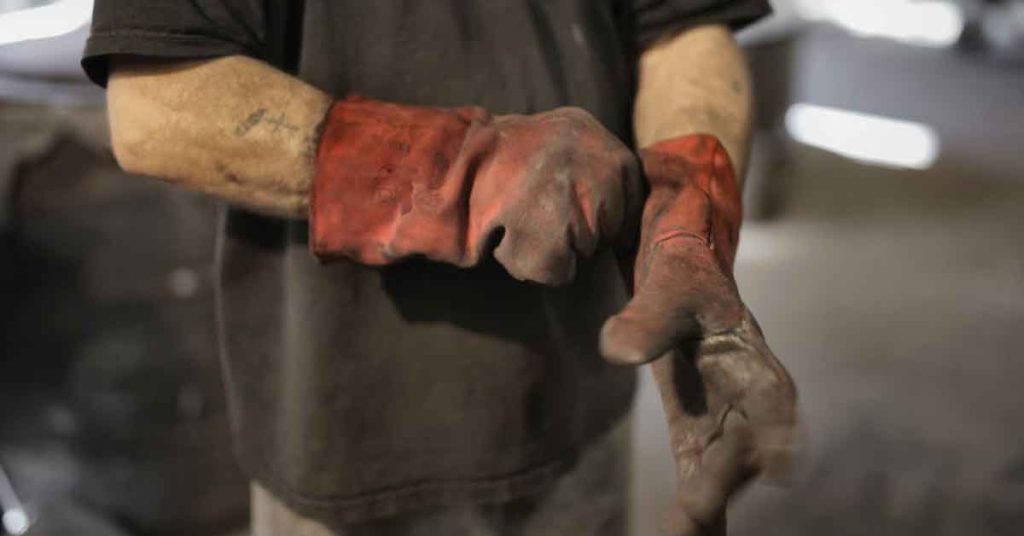
Homesteading in early fall is the perfect time to start winter prep before your hands are too cold to hold a screwdriver. I try to think of it like tightening the lid on everything before the first real cold snap hits. You don’t need to overhaul the whole place. You just need things to be dry, draft-free, and dependable when the weather turns.
The first year we moved to the homestead, I waited too long. A sudden November cold front rolled in, and I found myself in the dark, fumbling with a tarp and a flashlight, trying to patch a hole in the chicken run. That was enough to teach me the value of getting ahead while the sun’s still warm.
How to winterize a chicken coop
The coop is where I start every fall. Chickens don’t need it to be toasty, they just need it dry and draft-free. What really gets them isn’t the cold itself, but the damp. Wet litter, leaky roofs, and cold wind can make them sick faster than a snowstorm.
Here’s what’s worked for me:
- Check for leaks. Walk around the coop after a rain and look for damp spots. Seal small holes with caulk or scrap plywood.
- Deep litter method. Start layering dry straw or pine shavings now. Don’t clean it out, just turn it every week or so. The layers create a little warmth as they break down.
- Ventilation matters. It sounds backwards, but you need airflow to keep moisture down. I leave screened vents open near the roofline.
- Water warmers. If you’re in a freeze zone, test your chicken water heater now. I learned the hard way that waiting until the first freeze means dealing with cracked plastic and grumpy hens.
- Secure the door. Make sure nothing gets stuck or swells when it gets wet. A coop you can’t close is no help at all.
One reader in Minnesota shared that she puts a few inches of sand in the bottom of her coop before layering shavings. She says it helps with drainage and makes cleanup easier come spring. I haven’t tried it yet, but it’s on my list.
Ask yourself:
- Did the coop stay dry last winter?
- Do I have enough bedding to last through January?
- Is the heat lamp wiring safe and secure, if I even need one?
When do chickens molt in fall?
This catches a lot of new folks off guard. Right when you think your hens should be laying more eggs to stockpile for winter, then bam, they start molting.
Most chickens start losing feathers between late September and November, depending on breed and climate. It can look messy, and the egg production usually drops off hard. That’s normal. Their bodies are focusing energy on feather regrowth.
Here’s what I do during molt:
- Add extra protein to their feed (a handful of black oil sunflower seeds helps)
- Make sure they have a quiet, stress-free space
- Keep handling to a minimum if they seem extra sensitive
My Rhode Island Reds tend to molt early, while my Buff Orpingtons hang on to their feathers a little longer. I used to panic when I saw bare patches, but now I know it’s part of the rhythm of homesteading in early fall.
If you’re not sure whether your flock is molting or sick, just watch how they’re acting. Sick birds look sluggish and separate from the group. Molting birds still peck around, even if they look a little rough.
“What’s the first thing to winterize?”
That’s one of the most common questions I get from folks just settling into the homestead rhythm.
My answer: whatever failed you last year.
For some, it’s a gate that froze shut. For others, it’s a leaking roof on the shed. One friend in Idaho told me he always starts with the barn windows because he lost half a hay bale to rain blowing in one year. For me, it’s the coop door latch. If that thing sticks, I’m crawling on the ground at 5 a.m. with a headlamp, and nobody wants that.
So, grab a notebook. Walk your property. Look for anything that’s loose, exposed, or wasn’t up to the task last time. Fix it now, while your fingers still work and the hardware store isn’t cleaned out of pipe wraps and tarps.
Homesteading in early fall is when you prep the foundation; not for perfection, but for peace of mind. You can’t control the weather, but you can tighten the roof and check the latches. And that’s enough.
4. Garlic and Groundwork: Getting the Soil Ready for Spring
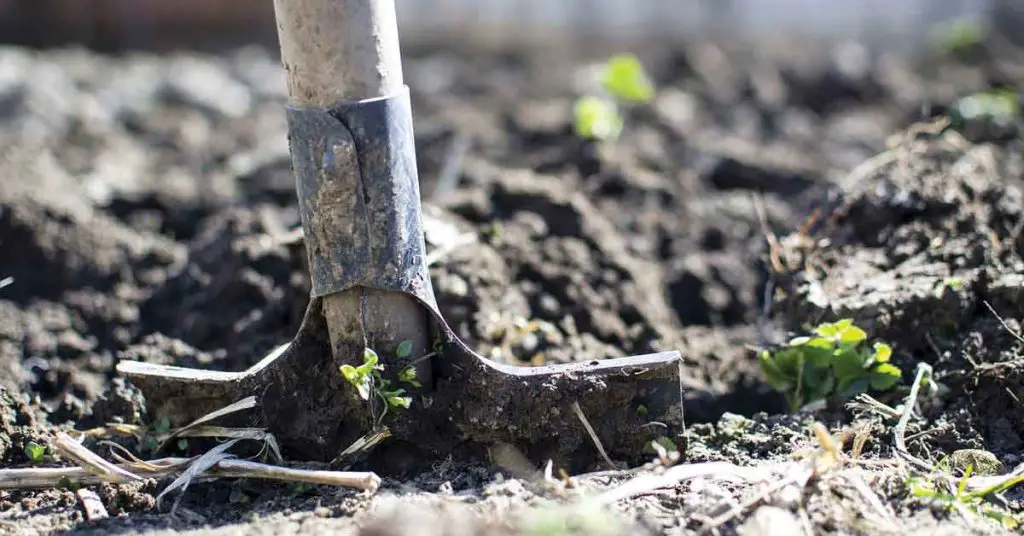
Homesteading in early fall is a quiet gift for your soil. You’re not racing against heat or weeding every morning. It’s the perfect time to think ahead, not in a pressure-packed way, but in a thoughtful, steady rhythm. And honestly, there’s something peaceful about working the dirt while the leaves fall around you and the bugs finally leave you alone.
Two of the smartest things you can do right now are plant garlic and prep your soil for spring with mulch or cover crops. They don’t take much, but they make a world of difference later.
When to plant garlic on the homestead
Garlic might be the easiest long-term win you can add to your homestead. You plant it now, cover it up, and pretty much forget about it until next summer.
Most folks in the U.S. plant garlic between mid-September and mid-November, depending on your zone. If your ground freezes solid in winter, aim for a few weeks before your average first frost so the cloves can set roots. If you’re in a milder area like coastal California or the South, you’ve got a bit more wiggle room.
Here’s how I do it:
- Break apart the bulb just before planting
- Pick the biggest cloves and plant them pointy side up
- Bury them about 2–3 inches deep and 6 inches apart
- Cover with mulch: straw, leaves, or pine needles work fine
- Walk away and let winter do its thing
I used to think garlic was fussy. I thought I’d need fancy soil or special storage. But a neighbor handed me a few extra cloves one October, and I shoved them into a leftover tomato bed on a whim. Come June, I pulled up a basket of fat, fragrant bulbs that made every stir fry taste better.
Questions you might ask:
- “Is it too late to plant garlic where I live?”
- “Do I need a special variety for my state?”
- “What if I forgot to mulch; should I still try?”
Short answers: Probably not, maybe, and yes.
Look for hardneck garlic in colder zones (5–7) and softneck if you’re down south. Most seed suppliers will tell you what works best for your region. And if you’re short on time, even a little straw tossed on top is better than bare soil.
Best fall mulching practices before frost
Mulching is one of those chores that doesn’t look dramatic, but come spring, you’ll be glad you did it. It protects your soil, keeps weeds down, and helps retain moisture, even under snow.
In early fall, I mulch the following spots:
- Garlic beds
- Any area I’ve cleared of summer crops
- Pathways between raised beds
- Around young trees or perennials
Good mulch options:
- Fallen leaves (shred them with the mower if you can)
- Straw (not hay, unless you like weeds)
- Pine needles (great for blueberries or acidic soil)
- Wood chips for walkways
If I’m feeling on top of things, I toss down a layer of compost first, then mulch on top. But even if it’s just a few bags of leaves raked into the beds, it makes a big difference.
A reader from Ohio wrote me last year to say he skipped mulching because he “ran out of steam.” By March, his soil was compacted, weedy, and dry. That spring, he mulched everything, beds, trees, even his compost pile, and said it was the best growing season he’d had in years.
Bonus tip: try a quick cover crop
If you’ve got empty space and time before a hard freeze, consider tossing down a cover crop. Even a quick scatter of crimson clover or winter rye can feed your soil and give weeds less room to move in.
The USDA NRCS Cover Crop Guide has zone-specific suggestions if you want to do a deeper dive.
I didn’t mess with cover crops for my first few years. It felt like one more thing. But the first time I dug into a bed in spring that had been covered in clover all winter, I was hooked. The soil was soft, rich, and ready. (no tilling needed)
So, if you’re wondering what to do with your garden beds now that the tomatoes are done and the cucumbers gave up, start with garlic and mulch. They’ll do more good than you might think. And they’ll meet you in the spring, right when you’re ready to start again.
5. Canning and Preserving While the Harvest’s Still Coming In
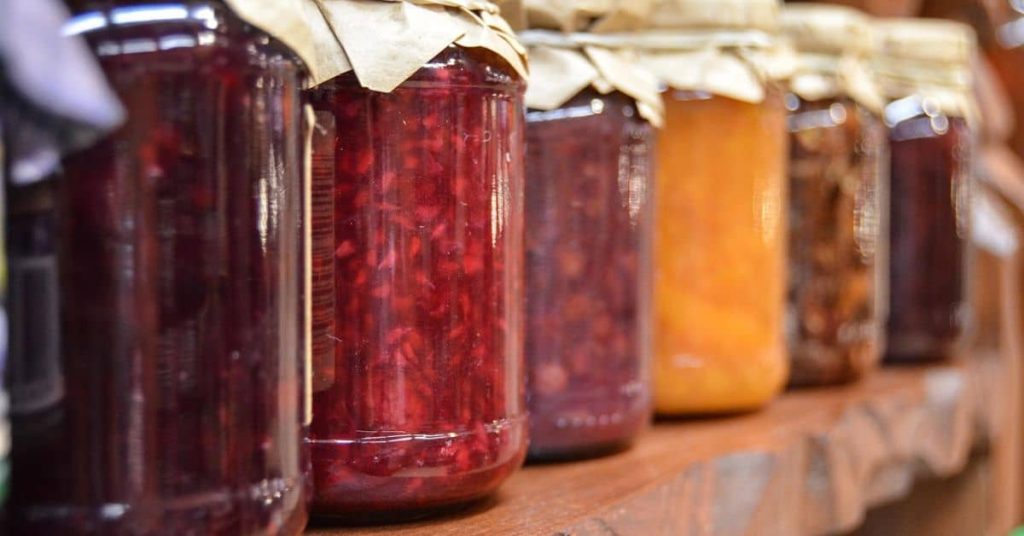
Homesteading in early fall brings that last big wave of produce before the garden quiets down. And even though the rush of summer might be over, there’s still plenty to put up, sometimes even more than you expect. This is when the pantry starts taking shape, not just for winter but for those long stretches when nothing’s growing outside.
If your tomatoes are still hanging on or your neighbors are trying to offload extra apples, this is the moment to grab a few jars, clear some counter space, and start tucking away the season’s goodness. It doesn’t have to be fancy. Just useful.
Prepare for canning season
If you’ve ever tried to start canning without a plan, you know how quickly it turns chaotic. I’ve learned to treat early fall like a soft reset: take inventory, clean what I’ve got, and keep it simple.
Here’s what I try to knock out first:
- Go through last year’s jars. Toss anything suspicious, and check for chips or rust
- Clean and test lids, rings, and pressure canner seals (if using one)
- Make a rough list of what’s coming in: “10 lbs tomatoes, 6 onions, maybe 20 apples…”
- Gather vinegar, canning salt, sugar, and extra lids now before stores run out
- Keep your most-used recipes printed and nearby (mine hang inside a cabinet door)
One mistake I made early on was jumping in without checking my seal rings. Midway through a tomato batch, I realized they’d cracked. I ended up freezing the sauce, which worked, but it sure wasn’t the plan.
You might be asking:
- “What if I don’t have time for big canning batches?”
- “Can I just freeze or dehydrate instead?”
- “Do I really need a pressure canner for everything?”
Nope. Start small. A few pints of applesauce or some quick-pickled onions go a long way. And freezing is 100% fine, especially for stuff like chopped peppers, blanched greens, or soup bases.
How to preserve the harvest
Different crops lend themselves to different methods. Don’t feel like you need to can everything. Mix it up based on what you have, how much time you’ve got, and what you’ll actually eat come January.
Here’s how I sort it out:
Apples
- Core and slice for applesauce or pie filling
- Dehydrate into chips or freeze peeled slices
- Make apple cider vinegar from scraps
Tomatoes
- Roast and freeze in muffin tins for sauces
- Can whole, diced, or as salsa
- Dry into “sun-dried” bits for snacks or stews
Onions
- Chop and freeze flat in zip-top bags
- Dry minced pieces in a dehydrator or oven
- Store whole in a cool, dry crate if well-cured
Squash
- Cube and freeze raw or roasted
- Make purée for bread, soups, or baby food
- Store whole (if cured) in a cool pantry or root cellar
A homesteader in Idaho told me she skips canning tomatoes altogether now and just slow-roasts them with garlic, then freezes in old yogurt tubs. She says it saves time and the flavor is better anyway. I tried it last year and she was right.
Freezer vs. pantry vs. root cellar tips
You don’t need a root cellar to store fall produce. But it helps to know where things last longest.
Freezer:
- Best for chopped veggies, roasted squash, berries, broth
- Label and date everything. Trust me.
Pantry (dry storage):
- Ideal for canned goods, dried herbs, onions, garlic
- Keep it dark and cool to avoid spoilage
Root cellar or cool basement corner:
- Great for potatoes, winter squash, apples (separated!), beets, carrots
- Use cardboard boxes with straw or wood shavings
I wasn’t sure a corner of my well house would work, but I gave it a try with some cured sweet potatoes. They lasted until February. Now it’s part of the fall routine.
So, if you’re still seeing tomatoes on the vine or baskets of apples at the market, don’t let them go to waste. Homesteading in early fall is a sweet spot for preserving. It’s not about filling every jar. It’s about keeping a little bit of that sunshine on your shelf, one batch at a time.
6. Meal Planning with What You’ve Got

Homesteading in early fall isn’t just about prepping the land and putting food up for winter. It’s also about eating what’s right in front of you, those late tomatoes, last rounds of zucchini, the surprise flush of kale that popped up after a rain. This is the season where meal planning starts to look more like “what do I have, and how can I use every bit of it?”
It’s not always pretty. Sometimes the onions are small, or the carrots come out stubby, or you’ve got just enough green beans for a side dish, but not a full meal. Still, if you’ve ever stood in front of your fridge with a jar of pickled peppers, a basket of squash, and half a roasted chicken, wondering what to cook, that’s when the real creativity happens.
Meal plan using fall harvest
One thing that changed the game for me was flipping the script on meal planning. Instead of picking recipes first, I started listing what I actually had and then building meals around that. It sounds obvious, but I used to waste time Googling dishes I didn’t have ingredients for, while a crate of potatoes sat untouched.
Here’s how I start:
- Write down what’s ready to use: tomatoes, kale, peppers, sweet potatoes, eggs
- Pick 3–4 base meals that are easy to stretch
- Make one big “centerpiece” item (like a roasted chicken or stew)
- Use leftovers to build lunches or breakfasts
Example from last week:
- Sunday: roasted chicken with carrots and squash
- Monday: chicken noodle soup (with homemade broth and garden onions)
- Tuesday: squash and kale frittata with leftover veggies
- Wednesday: stir-fry with eggs, rice, and chopped peppers
- Thursday: baked potatoes with sautéed greens and garlic
- Friday: roasted veggie tacos with pickled onions
- Saturday: leftovers or scrambled eggs + toast
One reader from Ohio told me she keeps a dry-erase board on the fridge with her harvest list. When something’s ready to use, she adds it to the board. When it’s gone, she erases it. She said it cuts down waste and helps her plan meals faster.
“How do I stretch a week of meals from the garden?”
That’s a question I’ve heard more and more, especially from folks trying to cut down grocery runs or feed families on tight budgets.
Here’s what’s worked for me:
- Make big batches of soup starters. Freeze roasted tomatoes, onions, garlic, and peppers in quart bags. Later, just blend and season for soup or sauce.
- Roast a tray of veggies every few days. They reheat well and work in tacos, frittatas, and rice bowls.
- Cook once, eat twice. Double up when you can. If you’re making chili or stew, stash some in the freezer for a busy week.
- Get cozy with “odds and ends” meals. Leftover roasted squash, crumbled sausage, and eggs = dinner. Tossed with pasta or rice = lunch.
I wasn’t sure leftover roasted veggies would hold up in tacos, but once I tried it, it became a regular thing. Add a little cheese, a fried egg, and you’ve got something hearty that feels fresh.
Questions to ask yourself:
- What’s in my fridge that’s about to turn?
- Can I batch-cook something today to use twice this week?
- Which meals do we actually enjoy repeating?
Homesteading in early fall is the perfect time to get into this rhythm. The garden’s still giving, but the pressure to preserve everything right now is easing. It’s a season where good food is close, and the best meals come from what you’ve already got.
7. New to Homesteading? Early Fall Is the Best Time to Start

Homesteading in early fall might just be the best-kept secret for beginners. Spring gets all the attention, but fall is quieter, cooler, and way less chaotic. You don’t have to jump into the deep end. You can start small, learn the rhythm of the land, and figure out what works for you without the heat, bugs, and rush that come with early planting season.
When I first dipped my toe into homesteading, it was late September. I didn’t have a clue what I was doing, but I cleared a corner of the backyard, planted garlic, and set up a compost bin. That was it. And honestly? It was enough to light the spark. The next year, I added a few raised beds. Then came the chickens. One step at a time.
How to start homesteading with no experience
If you’re starting from scratch, fall is your friend. The pressure’s off. You’ve got time to think, clean up your space, and maybe try a few low-stakes projects before winter.
Start simple. Here’s what I tell folks just beginning:
- Pick one thing. A small garden bed. A compost pile. A few hens if your zoning allows. Don’t try to “do it all.”
- Borrow tools or buy secondhand. Most rural folks I know are happy to loan you a shovel or tiller, especially if you ask with coffee in hand.
- Learn your land. Walk it. See where the water runs when it rains. Notice what gets full sun or frost first.
- Make a plan for spring, but keep it flexible. Your ideas will change once you get your hands in the dirt.
One reader from Georgia emailed me last year and said she started with a stock tank garden on her apartment patio. Now she’s on an acre outside Athens, with chickens and three compost bins. She said fall gave her “a calm place to begin.”
And if you’re worried about legal stuff, you’re not alone.
Is homesteading illegal in the U.S.?
Short answer: no, but there are local rules you need to know.
Homesteading in the U.S. is 100% legal, but depending on where you live, there might be zoning laws, HOA restrictions, or limits on livestock. For example, some cities allow chickens but no roosters. Others have minimum lot sizes for gardens or composting.
What worked for me:
I started by asking neighbors, then checked with my county extension office. They helped me figure out what I could do without getting fined. Most states also have ag departments that are super helpful, especially for first-timers.
If you’re looking for a trustworthy, beginner-friendly resource, check out the USDA New Farmers Toolkit. It covers land access, funding, planning, and legal stuff in plain English.
Questions to ask:
- “Can I legally raise chickens here?”
- “Do I need a permit to build a shed or greenhouse?”
- “Is there a local homesteading group I can learn from?”
Don’t let rules scare you off. Most of them are just there to keep peace among neighbors. And if you start small and stay respectful, folks usually don’t mind.
So if you’re thinking about homesteading in early fall, this is your moment. The land is slowing down, but it’s not asleep yet. There’s room to experiment, fail quietly, and learn by doing. No one starts perfect and that’s the whole point.
8. Mind the Little Fixes Before the Weather Turns

One of the sneakiest challenges of homesteading in early fall is forgetting how fast winter rolls in. One minute you’re picking the last tomatoes. Next thing you know, the wind’s howling and the gate latch is frozen shut.
I’ve learned the hard way that the little things, those “I’ll get to it later” jobs, can cause the biggest headaches once the weather shifts. That wobbly step, the hose left hooked up, or the feed bin lid that doesn’t quite close? They all seem minor until you’re dealing with them in a snowstorm.
Homestead maintenance tasks for early fall
This isn’t about doing it all. It’s about noticing the small things while you’ve still got the daylight and a little warmth on your side.
Here’s a checklist I keep handy each fall:
- Drain all hoses and store them flat. Even a little water left inside can crack them after one hard freeze.
- Cover outdoor faucets. I use those foam covers from the hardware store. Cheap and quick.
- Check latches, hinges, and gates. Oil anything stiff, replace bent ones, and tighten anything loose.
- Tune up your tools. Sharpen pruners, oil the blade on your hoe, and clean the mower if you used it into fall.
- Clear gutters and downspouts. I once skipped this and got a flooded shed corner in January. Lesson learned.
- Patch roof leaks or siding gaps. Even a small drip can cause major issues in outbuildings come winter.
- Test backup systems. Flashlights, generators, propane heaters; better to find the dead batteries now.
A neighbor here in Texas told me his trick: he walks the property with a cup of coffee and just looks. “If I see something I’d hate to fix in freezing rain,” he says, “I fix it now.”
That stuck with me. Because most of these fixes take five or ten minutes. But they save hours of frustration later.
Questions to ask yourself:
- “What broke or annoyed me last winter?”
- “What haven’t I looked at since spring?”
- “If we got hit with a cold snap tomorrow, what would I scramble to fix?”
I wasn’t sure replacing a cracked latch was worth the effort one year. I let it go. Then a windstorm blew the goat gate open and I spent a cold hour chasing two stubborn nannies through a neighbor’s field.
Now? I check the latches every October without fail.
Homesteading in early fall gives you the space to walk slower, notice more, and tighten things up before nature locks you out. You don’t need a master plan. Just a little time, a good look around, and maybe a wrench in your back pocket.
9. Find Your Fall Rhythm: It’s Not All To-Do Lists

When you’re deep into homesteading in early fall, it’s easy to treat every day like a checklist. There’s wood to stack, garlic to plant, fences to patch. But somewhere between those chores, there’s a slower rhythm worth noticing, one that doesn’t come with a clipboard or reminder app.
Fall has its own pace. The mornings are crisp, the light shifts golden, and everything seems to exhale after the push of summer. It’s the season that gently nudges you to look up from your task list and remember why you’re doing this in the first place.
Enjoying the season on the homestead
I’ve come to believe that the small pauses matter just as much as the big projects. One of my favorite things to do in early October is take my coffee outside, still warm in my hands, and just walk the fence line while the sun rises. No phone, no agenda, just watching how the pasture looks a little different each day.
Here are a few other quiet joys that help me settle into that fall rhythm:
- Outdoor breakfast on a chilly morning, wrapped in a flannel
- Walking barefoot through the dew (just until it gets too cold)
- Swapping jars of pickles or jam with a neighbor down the road
- Letting the kids or grandkids help pull up carrots or sweet potatoes
- Lighting the first evening fire in the woodstove or firepit
A friend in Wisconsin told me she makes a habit of having “no-chore Sundays” in fall, just a slow breakfast, a garden walk, and something baked in the oven. She said it keeps her from burning out before winter even starts.
It’s not about ignoring the work. It’s about realizing the work will never fully end, so you might as well enjoy the quiet in between.
Homestead life in every season
Spring’s a sprint. Summer’s survival. But fall? Fall is a kind of reflection. You see what worked, what didn’t, and where you want to head next. It’s when the rhythm finally starts to match your own again.
Questions to ask yourself:
- What’s one thing I’m doing just for joy, not because it’s “productive”?
- How can I make space for rest without feeling guilty?
- What memory from this fall will I want to carry into winter?
I wasn’t sure it mattered at first. I thought if I wasn’t “doing something useful,” I was wasting time. But now I know that sitting quietly by the coop or watching the leaves fall is useful. It’s part of staying grounded. Part of remembering why homesteading in early fall is something I chose in the first place.
So, yes, get your mulch down. Fix the latch. Stock the pantry. But also, take a breath. This season has gifts you won’t find on a checklist.
10. Questions Folks Are Asking Right Now

f you’ve ever caught yourself saying, “Hey Google, can I still plant something this late?”, you’re not alone. Homesteading in early fall comes with a lot of real-time, last-minute questions. Things change fast. One day it’s 78 and sunny, the next morning there’s frost on the truck windshield.
Here are a few common questions I hear from folks this time of year along with the plain, no-fluff answers I’d give to a neighbor asking over the fence.
“What’s the best state to start homesteading in?”
That depends on your priorities: do you want cheap land, mild winters, loose regulations, or a strong community?
Popular choices:
- Tennessee – affordable land, long growing season
- Missouri – great climate and relaxed laws
- Texas – lots of rural space, low property tax in many counties
- Idaho – good soil, strong homestead networks, especially up north
- North Carolina – strong support systems and long seasons
That said, I always tell folks: the best state to homestead in is the one where you’ll actually enjoy living. If you hate heat, don’t move to south Texas. If you need to be near family, factor that in too.
“What can I still plant this late in the season?”
If you’ve got 30 to 45 frost-free days left, you’re not done yet.
Quick-growing options:
- Radishes
- Spinach
- Lettuce
- Arugula
- Turnips
- Green onions
- Garlic (for next summer’s harvest)
In warmer zones like 8 or 9, you can even tuck in another round of beans or squash. If your nights are already dipping into the 40s, focus on hardy greens and root crops.
What worked for me: I planted spinach in early October one year just for kicks. It sprouted in 6 days and kept giving me baby leaves until December.
“What’s the first frost date near me?”
This varies a lot by state and even by town. You can check your local extension office’s website or type your zip code into the NOAA frost calculator.
Ballpark estimates:
- Zone 6: mid to late October
- Zone 7: late October to early November
- Zone 8: early to mid November
- Zone 9: you might not get a real frost at all
I usually circle two dates on my calendar: the average frost date and the earliest ever recorded. Then I aim to wrap things up somewhere in between.
“Is it too late to start a fall garden?”
Not necessarily. If your ground isn’t frozen and you’ve got seeds, you can still grow something even if it’s just for cover crop or soil prep.
Still worth planting:
- Garlic
- Cold-hardy greens
- Quick roots like radishes
- Cover crops (like rye, clover, or oats)
And even if you’ve missed the planting window, you can still:
- Clean out beds
- Mulch with leaves or straw
- Add compost
- Start a cold frame or low tunnel
I wasn’t sure planting spinach in late October would be worth it, but that one bed gave me early spring greens the next year without lifting a finger.
Homesteading in early fall comes with a lot of “Is it too late?” or “Can I still do this?” kind of questions. Most of the time, the answer is: “Yes, you’ve still got time.” You might just need to shift gears, adjust expectations, and make the most of what’s left. And there’s nothing wrong with that.
11. Make It Your Own: Fall Homesteading Doesn’t Need to Be Perfect
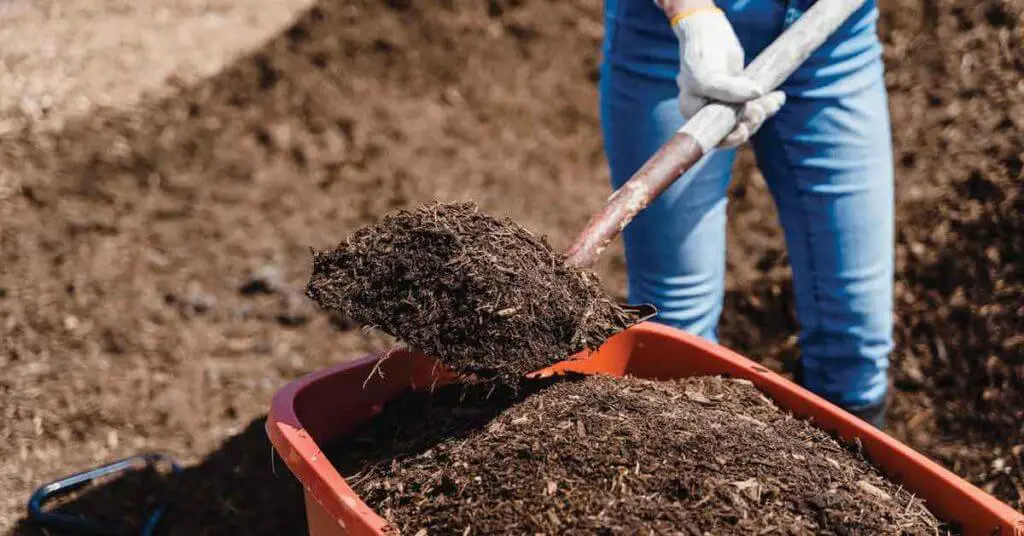
If there’s one thing I wish every homesteader—new or seasoned—could hear this time of year, it’s this: you don’t have to do it all. And you definitely don’t have to do it perfectly. Homesteading in early fall should feel like settling in, not showing off.
It’s easy to scroll through social media and see someone’s freshly mulched beds, jars lined up just right, chickens in a photogenic pose. What you don’t always see is the sink full of dishes just out of frame, or the squash that went soft before it got roasted.
Truth is, most of us are winging it more than we admit. And that’s okay.
Start where you are, don’t aim for Pinterest-perfect
When I started homesteading in early fall, I didn’t have raised beds or a root cellar. I had two mismatched buckets, some cardboard for weed cover, and a shovel that squeaked every time I used it. But I planted garlic anyway. I spread straw over bare ground. I saved some seeds that probably weren’t worth saving, but it taught me something.
Here’s what worked for me:
- Pick one or two small projects that feel doable, not impressive
- Don’t wait for everything to be “ready”, it never really is
- Use what you’ve got: cardboard, leaf piles, a borrowed rake
- Celebrate the wins, even if they’re small
A woman in Oregon told me she felt like a “fraud” because she only had a patio and a few potted herbs. But that same fall, she made her own rosemary-infused oil, dried basil, and helped a neighbor harvest apples. She’s now on a half-acre and growing more than she ever thought possible.
Questions to ask yourself:
- What can I do today with what I already have?
- Who says this has to look a certain way?
- Am I comparing myself to someone 10 years ahead of me?
You’re not behind, you’re just starting at your own pace.
Reflect on last year, but don’t get stuck there
Fall has a way of bringing up old “I meant to…” moments. Maybe the beans didn’t climb right, or the cucumbers got away from you, or you never got around to fixing the fence. I’ve had all those moments, and more than once.
What’s helped is taking a few minutes each fall to jot down what worked and what flopped. No pressure, no judgment. Just the facts.
Try this:
- Make a “next time” list, not a failure list
- Ask yourself: what felt good to grow? What was too much?
- Save seeds or notes in a place you’ll actually look next year
- Then, let it go
One fall, I planted spinach in four different spots just to see where it did best. Only one batch grew well. I didn’t call it a loss, I called it an experiment.
Homesteading in early fall is a chance to breathe, adjust, and try again. Not every row will be straight. Not every jar will seal. But if you show up, stay curious, and give yourself a little grace, you’re doing just fine.
You’re not building someone else’s homestead. You’re building yours. Let it be messy, let it be yours, and let it grow in its own time.
Homesteading in Early Fall Is Not About Doing It All, It’s About Doing What Matters
Homesteading in early fall gives you a second wind after the intensity of summer. It’s not about cramming in every task or having the perfect pantry lineup. It’s about doing what makes sense for your space, your energy, and your goals, whether that’s planting garlic, fixing the fence, or just watching the leaves change from your porch.
What I’ve learned over the years is this: fall is forgiving. It’s a time to clean up, start small, and make choices that your future self will appreciate without the pressure to get it all done. Maybe your beds are half-mulched or your canning jars are mismatched. That’s fine. If you’re still showing up and caring for your land, you’re right on time.
I’d love to hear from you: What’s your favorite early fall homestead ritual? Drop it in the comments. Whether it’s harvesting apples, morning walks in the crisp air, or your go-to soup recipe, your story might just help someone else find their rhythm too.
Disclaimer: The information provided in this article is for general informational purposes only and is not intended to be a substitute for professional advice. The author of this article does not claim to be an expert in homesteading and the information provided should not be relied upon to make decisions about your own homesteading journey. Please do your own research and consult with a qualified professional before making any decisions about your homestead.
Share via:
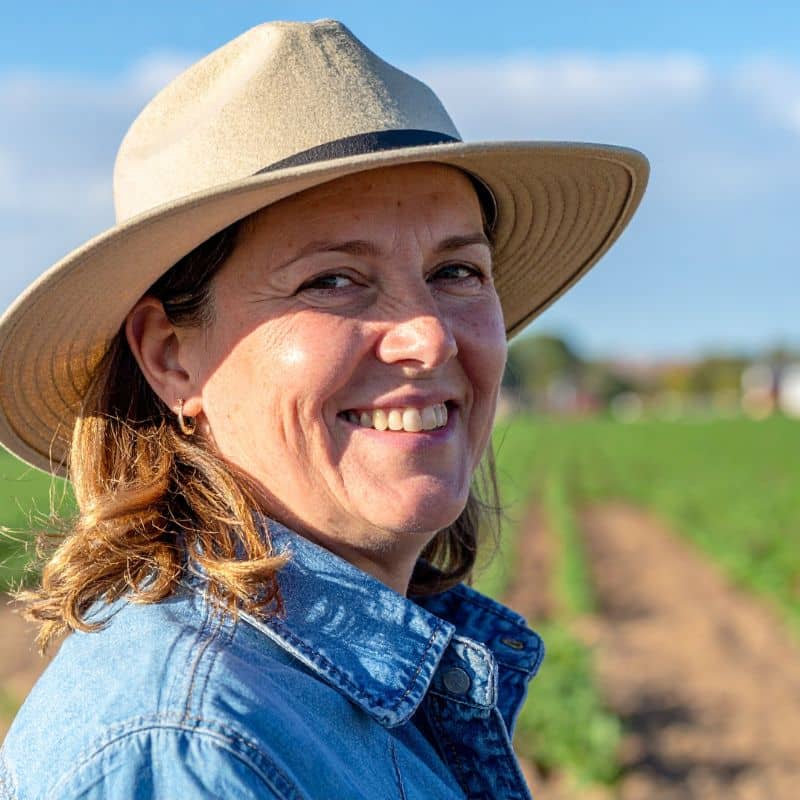
Co-Founder at Homesteading Simple | Horticulture & Sustainable Living Educator | 25 Years in Practical Homesteading

